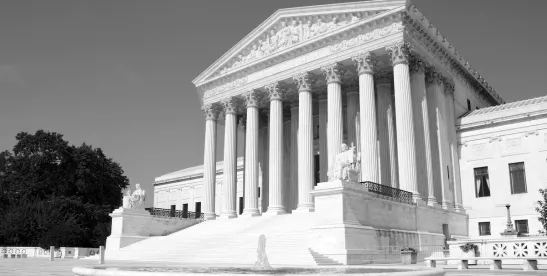The U.S. Supreme Court issued a landmark, unanimous decision in Ames v. Ohio Department of Youth Services, 605 U.S. ___ (2025) on June 5, 2025, fundamentally altering the landscape for “reverse discrimination” claims under Title VII of the Civil Rights Act of 1964. The ruling eliminates the long-standing “background circumstances” requirement for majority-group plaintiffs, significantly lowering the threshold for such claims and signaling a new era of risk considerations for employers.
Case Background: A New Lens on Disparate Treatment
Petitioner Marlean Ames, a heterosexual woman, served in various roles at the Ohio Department of Youth Services since 2004. In 2019, Ames applied for a newly created management position but was passed over in favor of a lesbian woman. Shortly thereafter, Ames was demoted from her program administrator role, which was subsequently filled by a gay man. Ames brought suit under Title VII, alleging that her sexual orientation was the reason for both the denied promotion and a subsequent demotion.
Both the District Court and the Sixth Circuit Court of Appeals rejected Ames’s claims, applying the familiar framework for disparate treatment cases based on circumstantial evidence under McDonnell Douglas Corp. v. Green, 411 U.S. 792 (1973). Critically, the lower courts required Ames—as a member of a “majority group”—to meet an additional evidentiary hurdle: she had to show “background circumstances to support the suspicion that the defendant is that unusual employer who discriminates against the majority.” Because Ames could not provide such evidence, her claims were dismissed at summary judgment.
The Supreme Court’s Decision: A Uniform Standard for All Plaintiffs
The Supreme Court, in a sweeping opinion authored by Justice Jackson, unequivocally rejected the “background circumstances” rule. The Court held that Title VII’s text protects “any individual” from discrimination based on race, color, religion, sex, or national origin—without regard to whether the plaintiff is a member of a majority or minority group. The Court emphasized that Congress did not authorize courts to impose special, heightened requirements on majority-group plaintiffs. Instead, all Title VII plaintiffs must be held to the same, “not onerous” prima facie standard articulated in McDonnell Douglas: showing that they applied for a position for which they were qualified, were rejected, and that the circumstances give rise to an inference of unlawful discrimination. See Texas Dept. of Community Affairs v. Burdine, 450 U.S. 248, 253 (1981).
The Court’s opinion also criticized the proliferation of inflexible, judge-made evidentiary rules in employment discrimination litigation, warning that such doctrines distort the statutory text and create unnecessary confusion for litigants and courts alike. In a notable concurrence, Justice Thomas (joined by Justice Gorsuch) went further, questioning the continued utility of the McDonnell Douglas framework itself and highlighting the risks posed by judicially created doctrines that lack textual support.
Implications: A New Era for Reverse Discrimination Claims and Employer Risk
The Ames decision is a watershed moment for Title VII litigation. By eliminating the “background circumstances” requirement, the Court has lowered the bar for majority-group employees (e.g., white, male, heterosexual, or Christian plaintiffs) to bring discrimination claims. This change is likely to result in a uptick in so-called “reverse discrimination” lawsuits, particularly as the current administrative and regulatory climate, including recent policy shifts at the Equal Employment Opportunity Commission (“EEOC”), appears increasingly receptive to such claims.
Employers should anticipate heightened litigation risk from majority-group employees and should take immediate steps to review and, if necessary, revise their internal employment policies, training, and DEI (diversity, equity, and inclusion) initiatives. The Supreme Court’s decision underscores the need for employers to ensure that anti-discrimination practices are applied consistently and neutrally, regardless of the group status of the complainant. The concurring opinion’s pointed critique of DEI programs further signals that such initiatives may face additional scrutiny in the courts.
Key Takeaways for Employers and HR Professionals
- Uniform Standard: All Title VII plaintiffs, regardless of majority or minority status, are now subject to the same prima facie standard under McDonnell Douglas.
- Increased Litigation Risk: The lowered threshold is expected to encourage more majority-group employees to pursue “reverse discrimination” claims, increasing potential exposure for employers.
- Scrutiny of DEI Initiatives: The decision, especially the concurring opinion, aligns with current Trump executive orders and places DEI programs under a sharper legal microscope, raising the stakes for compliance and risk management.
- Policy Review Recommended: Employers should consult with counsel to conduct a privileged review of employment policies and DEI practices to ensure compliance with the new legal landscape.
Conclusion
Ames v. Ohio Department of Youth Services marks a pivotal shift in Title VII jurisprudence, opening the door to a broader array of discrimination claims and signaling a more skeptical judicial approach to judge-made evidentiary barriers and DEI initiatives. Employers should act now to assess their risk and ensure their practices are aligned with this new, more exacting standard.



 />i
/>i
